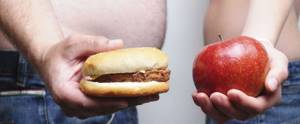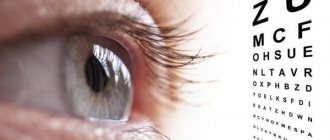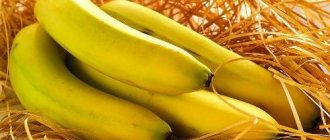Blood sugar levels in healthy people - both children and adults - range from 3.3 to 5.5 mmol/l. Its increase can be caused by various reasons, including stress, pregnancy, or serious illness. In such cases, blood sugar returns to normal after the root cause is eliminated.
Even a slight increase in sugar levels is a reason to consult a doctor to check the condition of the pancreas. In addition, it is necessary to reconsider your diet, since with high blood sugar, diet is often the only way to bring its level back to normal.
Even with a slight increase in blood sugar levels, it is recommended to consult a doctor to adjust your diet
An increase in sugar levels above 5.5 mmol/l is called hyperglycemia. If this indicator, when two tests are performed with a certain interval, turns out to be higher than or equal to 7.0 mmol/l, we can talk about the presence of diabetes mellitus. Elevated blood glucose levels are especially common in women over 50 years of age, and therefore they are recommended to visit an endocrinologist at least once a year to prevent the development and timely diagnosis of diabetes mellitus.
Dietary nutrition will help prevent the development of diabetes mellitus and its accompanying pathologies, as well as normalize weight that increases due to hyperglycemia.
In addition to changes in diet, if blood glucose levels increase, you need to stop drinking alcoholic beverages and smoking, and begin to lead a physically active lifestyle by including sports in your routine. However, such exercises are indicated only after stabilization of blood glucose levels. A healthy lifestyle and a special diet are beneficial for everyone; they ensure that weight is maintained at a normal level, bad cholesterol is reduced, and the gastrointestinal tract functions normally.
You should pay attention to the following symptoms, which may indicate an increase in blood glucose levels:
- constant thirst, dry mouth, frequent urination (including at night) and increased amount of urine discharge;
- decreased performance, fatigue, lethargy, weakness;
- increased appetite and weight loss;
- delayed healing of skin lesions, boils;
- decreased immunity;
- itching of the skin and mucous membranes.
The presence of at least one of the listed signs may indicate hyperglycemia.
Diet rules for diabetes
Diabetes mellitus is a disease in which the entire body suffers, each of its cells receives a “double blow.” Firstly, due to a lack of insulin, carbohydrates supplied with food are not completely broken down and absorbed, and the cells experience a lack of nutrition and energy. Secondly, undigested carbohydrates (sugars, glucose) circulate in the blood in high concentrations and have a toxic effect on organs and tissues.
Therefore, with high sugar levels, dietary correction is no less important than medication, and for mild type 2 diabetes, it is the main method of treatment.
Nutrition for diabetes should comply with the following principles:
- provide the body with the necessary energy;
- maintain glucose levels at an optimal level, taking into account drug therapy;
- contain sufficient fiber to remove toxins;
- meet the needs for protein, vitamins, microelements;
- the number of calories should correspond to age, energy expenditure;
- food intake should be dosed and repeated, every 2-3 hours, at a certain time of day;
- Those who are receiving long-acting antihyperglycemic drugs should not go without food for a long time
The diet for high glucose is compiled individually by an endocrinologist, taking into account the form and severity of diabetes.
What should you not eat if you have high blood sugar?
Different foods have different effects on blood glucose levels, which is why the concept of glycemic index (GI) has been introduced. This is a value that reflects how many carbohydrates enter the body after 2 hours from 100 g of product. The standard unit is 100 g of glucose, all of which are absorbed into the blood during this time.
According to the glycemic index, there is a scale from 0 to 100, according to which all products are divided into 3 groups:
- with a high index - above 70, which should be excluded from the diet;
- with an average index value of 56 to 70, they need to be limited;
- with a low index - 55 and below, the main guideline when creating a menu.
Products that increase blood sugar to varying degrees are presented in the table:
| High Index Products | Products with an average index | Low Index Products | |||
| The product's name | GI | The product's name | GI | The product's name | GI |
| glucose | 100 | Boiled potatoes | 70 | spaghetti | 55 |
| dates | 99 | Fanta, Coca-Cola, Sprite | 70 | sushi | 55 |
| rolls made from premium flour | 98 | boiled corn | 70 | mango | 55 |
| mashed potatoes | 98 | sugar | 70 | yoghurt with sweetener | 52 |
| baked potato | 95 | milk chocolate | 70 | kiwi | 50 |
| puffed rice | 92 | flour 2 grades | 69 | persimmon | 50 |
| apricots - canned | 91 | croissants | 67 | cranberry | 47 |
| natural honey | 90 | quick oatmeal | 66 | bran bread | 46 |
| rice chaff | 90 | a pineapple | 66 | green pea | 46 |
| cornflakes | 86 | pizza, sandwich rolls | 62 | brown basmati rice | 45 |
| White bread | 85 | white polished rice | 60 | grapes, peaches, apricots, pears, plums | 40-45 |
| popcorn | 85 | ripe banana | 60 | carrot juice | 40 |
| boiled carrots | 85 | ice cream | 60 | prunes | 40 |
| potato chips | 80 | mayonnaise | 60 | Rye bread | 40 |
| muesli | 80 | oatmeal porridge | 60 | raw carrots | 35 |
| breads, crackers, dry biscuits | 80 | buckwheat | 60 | fresh apple | 35 |
| shortbread products made from 1st grade flour | 76 | melon | 60 | orange | 35 |
| unsweetened waffles, donuts | 75 | sweet corn - canned | 59 | strawberry | 32 |
| watermelons | 75 | pies | 59 | whole milk | 32 |
| breadcrumbs | 74 | papaya | 58 | green banana, grapefruit | 30 |
| millet | 71 | ketchup | 56 | lentils | 30 |
| berries | 25-28 | ||||
| black bitter chocolate | 22 | ||||
| nuts | 15-20 | ||||
| all vegetables, canned food and pickles | 10-15 | ||||
| mushrooms, greens | 10 | ||||
| sunflower seeds | 8 | ||||
| dry seasonings | 5 | ||||
With a high index
Foods with a high GI or so-called “fast carbohydrates” sharply increase blood sugar, so if you have high sugar levels, it is recommended to exclude them from your diet. This group also includes alcoholic drinks; diabetics should absolutely not drink them.
Children with diabetes should be especially monitored. Despite the fact that they love chocolate, candy, all kinds of snacks, chips, cereals, especially sweet ones, they cannot be consumed, but replaced with fruit. Such products that do not contain glucose and are intended specifically for diabetics are acceptable.
With average index
Products from this list are undesirable for high sugar levels, but are acceptable in small quantities. Their use should be combined with dishes rich in fiber - vegetables, herbs, fruits, vegetable oils, which slow down the absorption of glucose.
It is also recommended to season them with spices - garlic, ginger, turmeric, parsley, cloves, black pepper, cilantro, curry, basil.
With low index
Dishes made from these products should form the basis of a diabetic’s diet in combination with meat, dairy dishes, and vegetable oils. They contain “slow” carbohydrates, which take a long time to be absorbed from the digestive tract, are gradually utilized and do not cause a sharp rise in glucose levels when glucose levels are high.
However, you should also take into account the calorie content of foods and calculate their quantity based on it.
Even if all the components of the menu have a low GI, if they are in excess, you can gain weight, and this will negatively affect your health.
Foods prohibited for high cholesterol
So, if you have high cholesterol levels, you should first of all reduce the fat content and total calorie content of your food. To do this, you should minimize the consumption of high-calorie animal products - fatty meat, offal, dairy products with a high fat content, as well as fried foods.
The following should be excluded:
- Sweet baked goods
- Pasta
- Sugar
- Chocolate
But, in principle, limiting these foods is the norm for a healthy diet, and their absence is a prerequisite for almost every diet. A surprise in terms of the ability to increase cholesterol levels in the blood is presented to us by such familiar foods as, for example, semolina, radish, radish, sorrel and spinach.
But chicken eggs, which became persona non grata on many tables due to the high cholesterol content in the yolks, have recently cleared their reputation. Research on this issue has shown that eating eggs not only does not help cholesterol accumulate in the body, but also gently lowers its level, so you can enjoy your favorite egg dishes without any problems.
List of approved products
Foods that will not raise your glucose levels include:
- lean meat;
- eggs;
- low fat milk and dairy products;
- Fish and seafood;
- mushrooms;
- legumes, preferably young green beans;
- raw or stewed vegetables - all types of cabbage, zucchini, zucchini, eggplant, squash, tomatoes, cucumbers, Jerusalem artichoke, onions, garlic, asparagus, lettuce, spinach, artichokes, nuts, avocados, citrus fruits.
Bread should be rye or with bran, whole grain cereals, not chaff or flakes, basmati or black rice. This is just a list of the most commonly consumed products. If you are interested in the question of how other foods affect high sugar levels, you can consult your doctor.
Can you eat honey if you have diabetes?
Among all natural products, honey is the leader in the number of beneficial ingredients. However, it does contain sugar and fructose. Therefore, the question of the possibility of using honey for high sugar levels has long remained controversial.
Modern medicine allows dosed consumption of honey for patients with type 1 diabetes, 2-3 times a week, 1-2 teaspoons, and for patients with type 2 diabetes, 1 tablespoon is allowed daily.
The quality and type of honey matters. Recommended varieties that contain less glucose and more fructose:
- buckwheat;
- lime;
- acacia;
- chestnut;
- heather;
- eucalyptus;
- coriander.
The glycemic index of these types of honey varies from 40 to 50, which corresponds to the average.
Diet principles
It seemed that the very principle of the diet could be revealed in its name, but this is absolutely not the case. The diet excludes sugar and all products containing it - sweets, baked goods, drinks, alcohol (liqueurs), sauces and others.
Why exactly does sugar contribute to weight gain? The thing is that it is a fast carbohydrate, that is, it saturates the body with energy, but is quickly absorbed, preferably in fatty tissues. Complex carbohydrates, on the contrary, take a long time to be digested by the body and give a feeling of fullness.
By eliminating bad carbohydrates, a person not only improves his body, but also switches to a healthy diet.
The diet completely excludes the following foods:
- sugar;
- chocolate;
- carbonated sweet drinks;
- syrups;
- liqueurs;
- low alcohol drinks;
- baked goods;
- jam;
- condensed milk;
- sweet yoghurts.
For a faster weight loss effect, you should completely exclude fast carbohydrates from the menu. It’s quite easy to choose them - based on the glycemic index (GI).
This concept will be discussed in detail below.
Types of sugar substitutes
It’s hard to give up sweets completely, that’s how the body works. To prevent a person with high sugar levels from feeling that “life is not sugar,” various sweetener substitutes have been created. They include 2 large groups:
- of natural origin;
- synthetic.
Natural sweeteners
This group includes fructose, sorbitol, xylitol, stevia, and they are obtained from plants. Their advantage in case of high glucose is their participation in energy metabolism and complete digestibility by the body. The only drawback of these “sweets” is the high price.
Synthetic sweeteners
They are well known: saccharin, cyclamate, aspartame, sucralose, neotame. Despite their good taste and affordable price, all of them do not participate in energy metabolism, which is undesirable with high sugar levels, and have side effects to one degree or another.
It has been established that saccharin and aspartame have carcinogenic properties; any of the representatives can cause allergies, endocrine disorders, and negatively affect the development of the fetus in a pregnant woman.
Glycemic index
The glycemic index is for a diabetic what the multiplication table is for a schoolchild. There’s no way without her. This is an indicator that allows you to calculate how eating a particular product will affect your sugar levels.

There is always a choice
The glycemic index of any ingredient in a diabetic dish should not exceed 50 units. Only in this way can a person with type 2 diabetes lower their sugar and significantly increase the duration and improve the quality of their life.
Nutrition for high blood sugar during pregnancy
For pregnant women with high sugar levels, diet is of paramount importance, because metabolic disorders affect the development of the fetus. Women who were diagnosed with diabetes before pregnancy, or appeared with its onset (gestational), must strictly monitor their diet, keep a diary monitoring sugar levels, calorie intake and food intake - daily and over time.
Pregnant women with high blood glucose levels should completely exclude sugar, jams and preserves, pastries and cakes, honey, sweets, chocolate, ice cream, baked goods made from white flour, lard, margarine, and mayonnaise from their diet.
It is necessary to limit animal fats, berry and fruit juices as much as possible. You should also give up potatoes, dates, bananas, watermelon, grapes, dried fruits - raisins, dried apricots, figs. It is necessary to limit pasta, bread - only gray or black up to 200 g per day, vegetable oils, sweet berries.
With increased sugar, the diet should include lean meat, fish, eggs up to 3-4 per week, seafood, mushrooms, dairy products, fresh vegetables and fruits, herbs, cereal porridges, with the exception of semolina and rice.
You can find out why high glucose levels are dangerous for pregnant women in this article.
conclusions
- Elevated blood sugar levels that persist for a long time can lead to a person with “prediabetes” becoming diabetic (according to statistics, every third person faces this problem).
- The reasons that cause sharp jumps, as well as deviations from the norm, include prediabetes and diabetes; poor diet, large amounts of sweets, semi-finished and ready-made foods; malnutrition, refusal of one or more meals, strict and strange diets; refusal to eat before and after training, which leads to the body not receiving enough fuel; lack of sleep, chronic stress; pregnancy (women may be at risk of developing gestational diabetes).
- Signs of high/low blood sugar: weakness, lack of energy; excessive craving for sweets/carbohydrates; excessive thirst; severe weight fluctuations/loss; frequent urination; mood swings, nervousness; blurred vision, blurred vision; slow healing of skin wounds, dryness, cuts and bruises; frequent infectious diseases; hard breath; frequent headaches.
- To lower and maintain normal sugar levels, give up processed foods, eat right, eat enough protein, healthy fats and fiber; choose natural sweets, avoid refined flour, control the consumption of natural sweeteners; exercise regularly; control stress levels; and get enough rest.
Source: https://draxe.com/normal-blood-sugar/
What happens if you don’t follow a diet with high sugar levels?
Diabetes mellitus is fraught with the development of complications. As a result of a lack of energy from the breakdown of glucose and its excess with elevated sugar levels, it is primarily the nervous tissue that suffers, and diabetic neuropathy develops.
The walls of blood vessels are also affected, angiopathy develops, and atherosclerosis quickly joins it, which leads to stroke and heart attack. Both of these processes contribute to the development of gangrene of the extremities, retinal atrophy, damage to the kidneys, liver and other organs.
A “bouquet” of pathologies arises very quickly in those who do not adhere to a special diet for high sugar. This can lead to a life-threatening condition called hyperglycemic coma.
The other extreme is no less dangerous - excessive carbohydrate restrictions. While taking insulin and other drugs, such a diet can cause hypoglycemia, which can become severe in a few minutes.
How to reduce glucose levels with folk remedies?
There are many traditional medicine recipes used for high sugar, among them the most common:
- chicory - brewed and drunk like tea;
- rosehip infusion in a thermos;
- sauerkraut juice;
- low-fat kefir with buckwheat, cinnamon;
- tea and herbal infusions, which include dandelion root, burdock, nettle leaf, currant, clover, as well as aspen bark and bay leaf.
Among many other recipes, we should note the popularity of the “three Russian heroes” - garlic, onion, horseradish. They are added to food in raw, grated form, juices, decoctions and tinctures are made.
You can find out more about the preparation of popular recipes for high sugar in the video.
It is important to remember that different forms of diabetes have characteristics in different patients, and methods of correction for high sugar levels also differ. Therefore, the main adviser in creating a menu and using any medicinal products is an endocrinologist.











